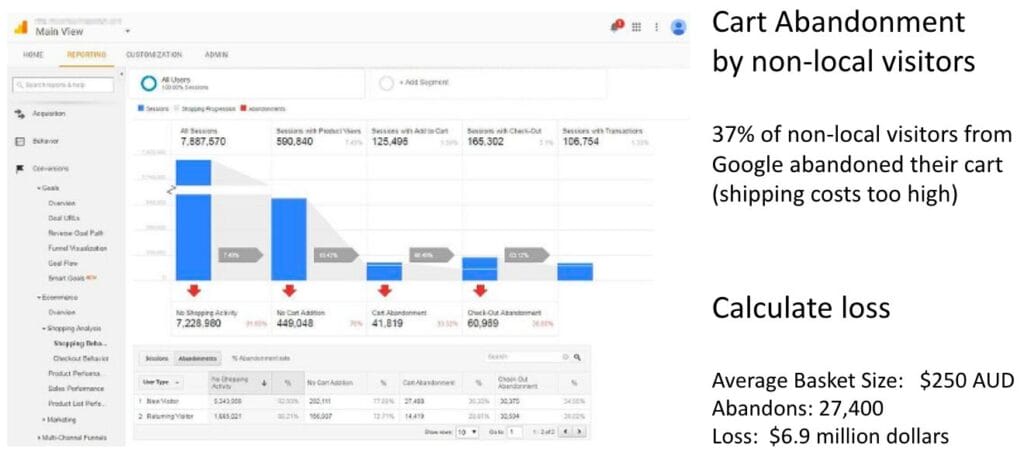Implementing Phased Hreflang
March 13, 2024Why so many hreflang errors?
March 19, 2024Finding Your Project Champion
This is the second article digging deeper into comments I received on a LinkedIn post about using a phased approach to implement hreflang. In the post, I recounted a conversation with a prospect who was stopping his hreflang project because it was too complex. I suggested not stopping forward momentum but implementing a phased rollout. First, focus on where the cannibalization problem was the most acute and/or what they can implement quickly and then iterate over time.
A few commented on the complexity of implementing hreflang, especially in decentralized and regional-based organizations. One DM gave me a chuckle, suggesting my naive response shows I have never implemented it. I would argue I understand the challenges better than most, as I have spent a significant part of the past ten years implementing hreflang for multinationals.
Someone Cares About the Problem
I suggested that they try to find an Executive Sponsor. The executive sponsor is someone in the organization who wants to solve the problem and has the clout to cut across organizational blockages. One respondent stated that the person may not exist in real life.
I replied that I find it hard to believe there is not someone high enough in the organization who can facilitate solving this problem. We cannot discuss all the scenarios for finding this individual in this post, but we will touch on a few. I guarantee there is someone at HQ who can solve this. You need to find them.
In my 30 years in global digital marketing, working with thousands of multinationals, I have only had two cases where, when I tried, I could not find an executive sponsor. In both cases, the sites had licensed the brand name in their market. Since all of the websites were licensees and considered independent of each other, the brand owner legally could not intervene. Implementing a solution would require all of these individual entities to play nice with each other. In both cases, some markets directly benefitted from the cannibalization and did not want to participate.
Fear of Escalation
I am not suggesting you pick up the phone and call the global CEO to intervene. In most organizations, that would be defined as a career-limiting move, jumping too many chains of command. In my experience, most people are scared to escalate an issue of this nature, even to local management. At least try to escalate within your local organization by demonstrating the negative business impact. The market manager can then address this in a regional or global meeting. If you can show which markets are causing the cannibalization and detail the negative impact, that will significantly help your management team escalate to higher levels.
Refine Your Business Case
When implementing hreflang, people often try to solve world peace and introduce complex processes, CMS changes, and other technical challenges, in addition to a lack of resources. It is frustrating when you cannot break through the reasons for not implementing hreflang.
Have you made a strong enough business case? I have been the CEO of a multinational agency, but more importantly, I have worked in or with Fortune 100 companies, where most decisions are made using business cases. Successful people know how to create and present them to get their projects approved. Ultimately, the solution has to be less painful than the problem and demonstrate a positive ROI.
Most people demonize hreflang because implementing and managing it has been challenging. If no one has quantified the cannibalization, known pain and suffering will win. You have to demonstrate that the financial impact to the business will offset the efforts necessary to implement. We have created a course we will release soon with International Webmastery that walks you through the steps needed for a successful business case.
But while you are trying to find them, refine your business case and simplify the problem description and the implementation plan. This is why a phased approach can be successful.
Show Me the Money
At the end of the day, that unicorn executive needs to believe there is a win for the organization. Try to find someone responsible for global or regional sales. Do you have one of those new global growth managers who is a champion for change and can motivate cross-department collaboration?
I remember once at IBM presenting a business case showing that if we improved some of the conversion steps, we could generate $50 million in incremental revenue. This Senior VP told me he did not get out of bed for $50 million. I dug deeper and found we could generate even more, which nudged him to support the project.
I can almost guarantee that a problem statement of “we are losing $X per month due to non-local sites outranking us” and, like that IBM executive if the loss is significant enough, there will be someone who cares. The local market where the loss occurs cares, but you need participation from other markets to implement hreflang.
Try to demonstrate the actual impact of revenue as much as possible. I advocate using the cart abandonment rates. If possible, use the exact sum of abandoned baskets by non-local customers. If that is not captured, then what is the average bucket?

In this example, 37% of non-local prospects abandon their cart due to high shipping costs. The system could not switch to their local market site, where free shipping would have been. We calculate a $6.9 million Australian dollar loss each month using the average basket size and abandonment rate. Remember, cart abandonment is someone who goes as far as putting one or more items in a cart and trying to purchase.
In our opportunity model, we need to demonstrate that by bringing these non-local buyers to their local market, where shipping costs would not be a problem, we can recover some portion of that nearly $7 million. That rate should continue to, in theory, $84 million a year. The more you can use actual data and ratios others use, the more valid your data will be. The current loss is irrefutable, and we need to tie the incorrect page ranking to the reason for abandonment.
It May Take Time
Finding this elusive champion may take time. With Hreflang Builder, we have a mix of immediate signups, some of which take many months to get approved. We face all of these barriers mentioned, including some. Those projects that move the fastest are those with an executive sponsor. There is sometimes hope; one of our longest delayed approvals for a major global company took 2.5 years. Ironically, within 48 hours of a senior executive understanding the problem, it was approved and funded, and most barriers were removed.
In a different consulting realm, I audited multiple brands with 20 to 100 market sites for a multinational portfolio company. None of the sites were indexed in Google because they used a script that required you to state your age before entering. Of the brands, only one thought this was a critical enough problem to immediately find a solution. As you would expect, we proposed that solution to all brands and faced the wrath of how dare HQ try to force a solution upon us. Over the next few years, this brand received market praise and dozens of industry awards for its performance. Finally, after twelve years of growing performance across multiple brands in digital marketing, the new Global Digital Marketing Manager had enough data to implement cross-market and brand search goals and a requirement to use multiple common platforms to reduce costs and improve overall performance.
It is frustrating when these collective reasons for not implementing hreflang overpower the potential gains. There may be valid reasons, but not doing anything to solve the problem is unacceptable. Yes, I get frustrated when people don’t use our solution, but I get more frustrated when they don’t do anything or implement something half-assed. Go find your champion!

